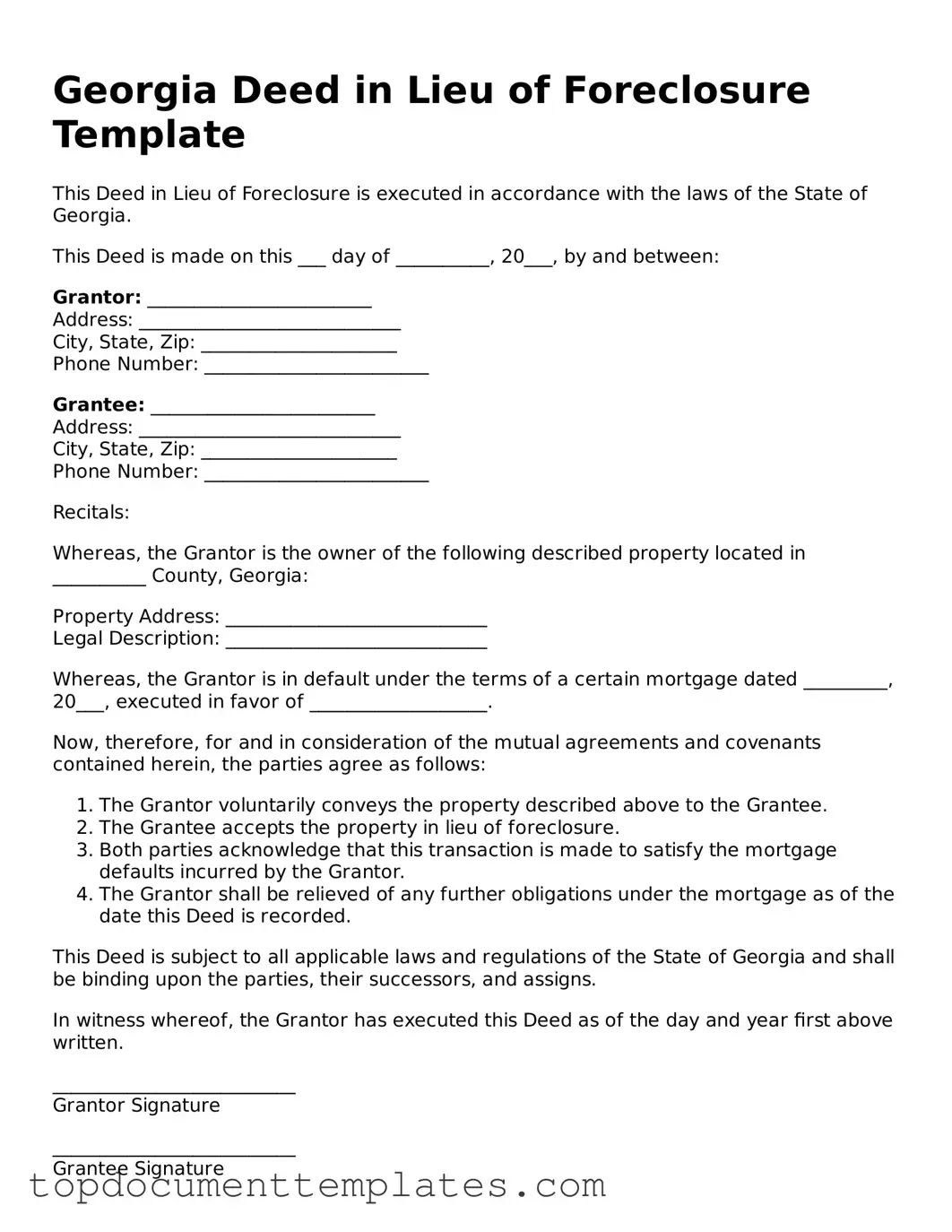The Georgia Deed in Lieu of Foreclosure form serves as a crucial legal instrument for homeowners facing financial hardship and potential foreclosure. This form allows a property owner to voluntarily transfer the title of their property to the lender, effectively settling the outstanding mortgage debt without the lengthy and often stressful foreclosure process. By utilizing this option, homeowners can mitigate the negative impact on their credit scores and may avoid additional legal fees associated with foreclosure proceedings. The form outlines essential details, including the property description, the parties involved, and any existing liens or encumbrances. Additionally, it may include provisions regarding the condition of the property at the time of transfer, ensuring both parties have a clear understanding of their responsibilities. This process not only provides a more amicable resolution for distressed homeowners but also enables lenders to reclaim their assets more efficiently. Understanding the implications and requirements of the Georgia Deed in Lieu of Foreclosure is vital for homeowners considering this route, as it can lead to a fresh start and a more manageable financial future.
